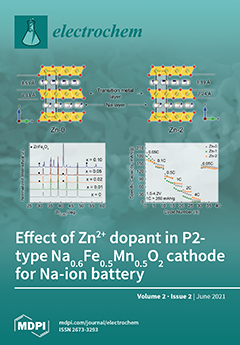A continuously growing interest in convenient and ‘green’ reaction techniques encourages organic chemists to elaborate on new synthetic methodologies. Nowadays, organic electrochemistry is a new useful method with important synthetic and ecological advantages. The employment of an electrocatalytic methodology in cascade reactions is
[...] Read more.
A continuously growing interest in convenient and ‘green’ reaction techniques encourages organic chemists to elaborate on new synthetic methodologies. Nowadays, organic electrochemistry is a new useful method with important synthetic and ecological advantages. The employment of an electrocatalytic methodology in cascade reactions is very promising because it provides the combination of the synthetic virtues of the cascade strategy with the ecological benefits and convenience of electrocatalytic procedures. In this research, a new type of the electrocatalytic cascade transformation was found: the electrochemical cyclization of 1,3-dimethyl-5-[[3-hydroxy-6-(hydroxymethyl)-4-oxo-4
H-pyran-2-yl](aryl)methyl]pyrimidine-2,4,6(1
H,3
H,5
H)-triones was carried out in alcohols in an undivided cell in the presence of sodium halides with the selective formation of spiro[furo[3,2-
b]pyran-2,5′-pyrimidines] in 59-95% yields. This new electrocatalytic process is a selective, facile, and efficient way to create spiro[furo[3,2-
b]pyran-2,5′-pyrimidines], which are pharmacologically active heterocyclic systems with different biomedical applications. Spiro[furo[3,2-
b]pyran-2,5′-pyrimidines] were found to occupy the binding pocket of aldose reductase and inhibit it. The values of the binding energy and Lead Finder’s Virtual Screening scoring function showed that the formation of protein–ligand complexes was favorable. The synthesized compounds are promising for the inhibition of aldose reductase. This makes them interesting for study in the treatment of diabetes or similar diseases.
Full article




